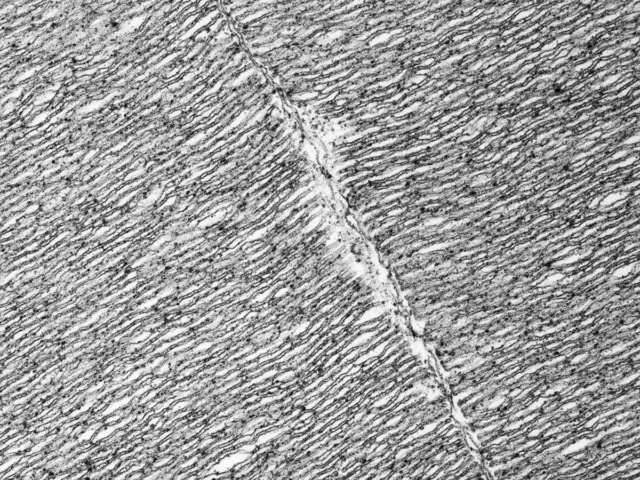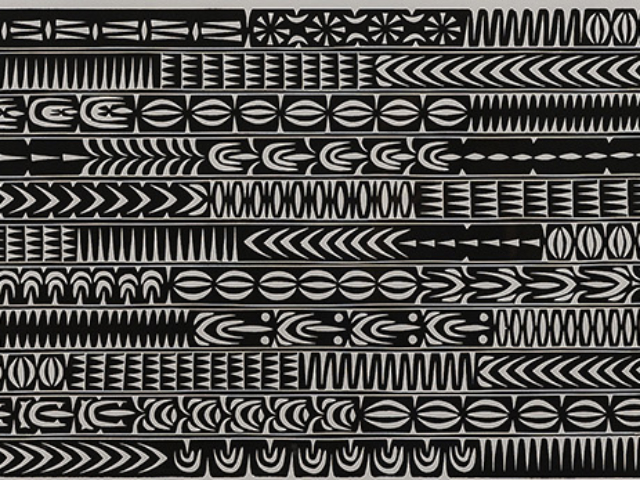|
These stacked membrane discs inside a single rod cell contain the pigments that absorb the light coming into the eye. These pigments convert the light energy into an electrical signal that the optic nerve transmits to the brain. Rods operate in lower light conditions and are extremely sensitive enabling the fish to see well in low light conditions. Each membrane layer is just 16 nanometres thick (1 nanometre is one millionth of a millimetre). Image: Anne Simpson |
Creation ancestors form part of a living landscape and practices such as hunting and foraging have an important place in contemporary Indigenous life. There remains a strong belief in the land as sentient, or that ancestral spirits imbue the landscape, creating a situation in which spiritual and physical aspects cannot be altogether separated. This intertwined connection allows the intellectual and creative spirit embodied within Indigenous peoples to manifest in the material objects that they create. This relationship with the land, through its direct physical qualities, and a mythological sense of place and time are transformed through the body and onto objects of art. This is a deep relationship and reliance on country to establish identity and belonging is paramount. From the microscopic images that were provided as stimulus for the creation of artworks for this project, the patterns that resonated with my current practice were those of the linear composition that formed the fish eye. Designs were then drafted to make this connection apparent taking into account cultural connections and familiarities along with motifs, language and environment. Malu Minaral is the culmination of this activity. Malu Minaral are words from the traditional language of Kala Lagaw Ya from the Western Islands in the Torres Strait. When translated into English they mean sea patterns or patterns from the sea. This artwork is composed of markings that would adorn ceremonial masks and other utilitarian items that were used during traditional times by Torres Strait Islanders – markings that represented the surrounding natural environment, the cursive and rhythmic patterns that meandered and curled across the land, the sea and the sky. The spiralling, tapering and tight linear folding produces an optical vibration that can serve a number of purposes; denoting ancestral presence in the here-and-now, indicating latent or active elemental or spiritual forces, or representing the rippling sea, buffeting wind or starlit sky, all so critical to the nautical traveller, hunter or fisherman. In the case of this triptych work, the three panels form a narrative about life in the sea and the abundance of marine activity that comes with a diverse population of sea creatures that make home in the waters coursing through Torres Strait. Artist: Brian Robinson |




